After months of planning, studying, and routing, my dad and I were finally on a plane heading to Tucson, Arizona, to begin a week of birding. We planned this trip meticulously, with nearly every stop and target organized to a strict itinerary.
Landing in Tucson at 3:00 PM, local time, the heat was immediate. Being from Florida, I’m very accustomed to our humid, sticky heat, but Arizona heat is a different animal. Of course, they have a “dry heat,” but what that means is it feels like you walked into an oven.
However, once we got out of Tucson and started heading into higher elevations, the temperature was phenomenal. Most days began in the low 70s and would barely approach 90°F by the afternoon.
We were also fortunate with the weather. August in this part of the US is well known for its monsoon season, with high winds and heavy rains, making some mountain and desert roads potentially dangerous. Regardless, we only saw rain sporadically during our visit, and were only caught in a light sprinkle a handful of times.
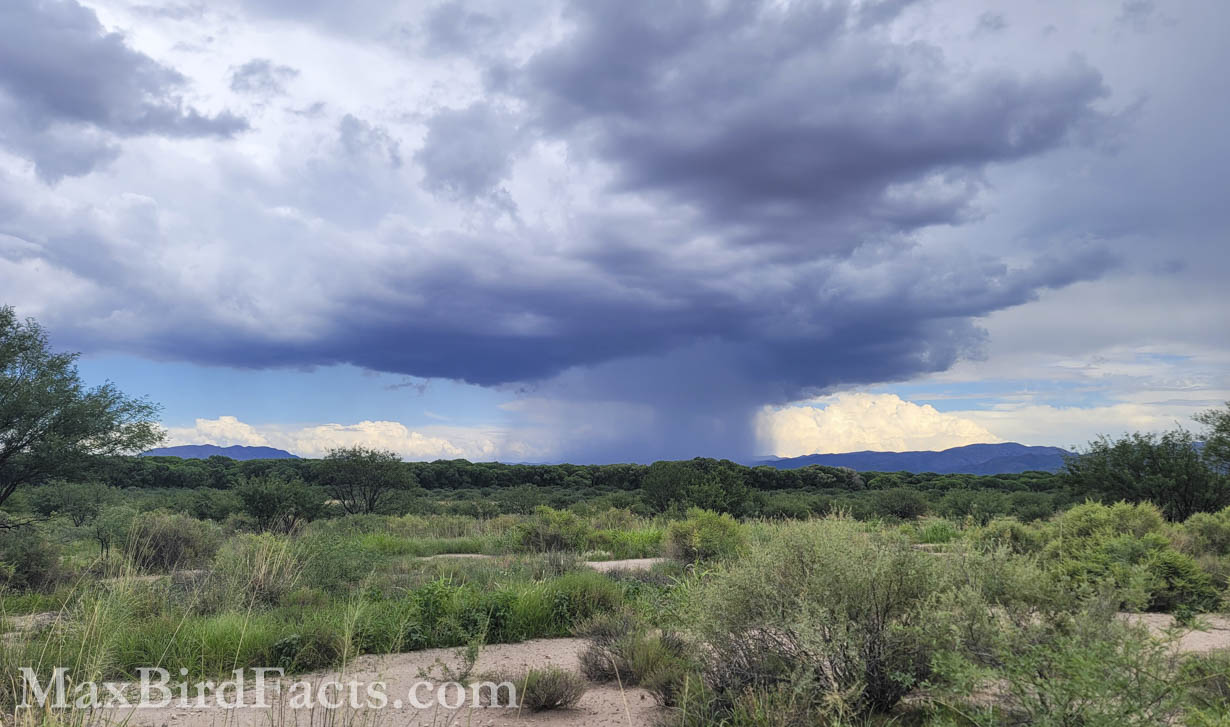
Each day started at 5:00 AM (8:00 AM EST) and ended around 9:30 to 10:00 PM (12:30 – 1:00 AM EST), so we squeezed as much out of each day as possible. We walked a little over 27 miles in these eight days, averaging roughly 3.4 miles per day, with days four and five being 4.5 miles each and day six only 1.7 miles. But all of this was at a birding pace, so relatively slow, with often stops to scan for movement or glass trees and bushes.
Food was mostly a side priority during this trip. We did eat dinner at some nice, local Mexican restaurants, but breakfast and lunch were strictly for energy recharges. For me, breakfast was a cup of black coffee right after waking up and a pouch of mixed nuts later in the morning, usually after our first stop. Lunch was a slice of multigrain bread slathered in peanut butter with a drizzle of mesquite honey, water, and potato chips. While it doesn’t sound like much, these quick and simple lunches were completely satisfying and helped us stay on schedule.
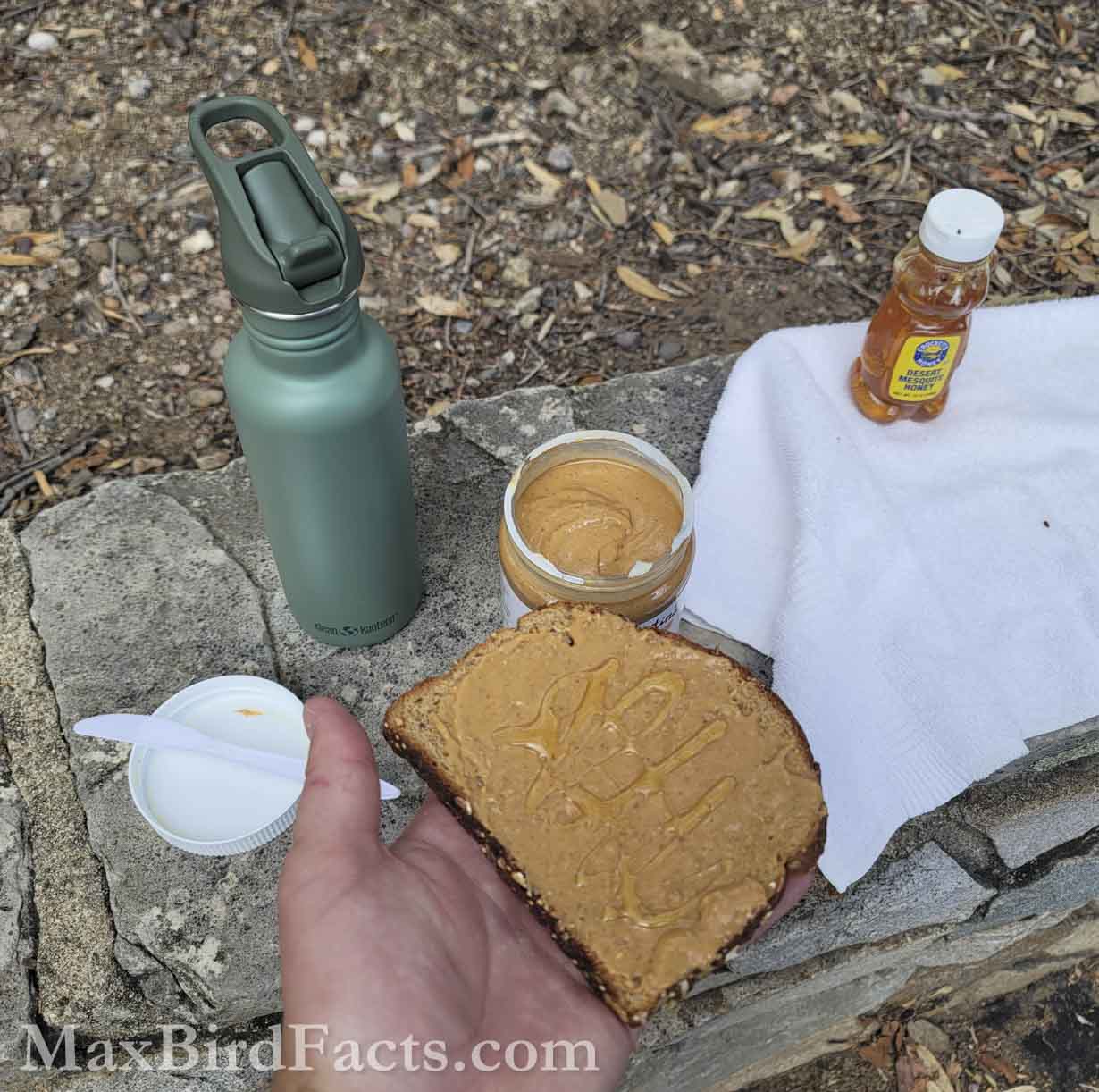
Now, with some of this background in mind, let’s start with the primary goal of this trip, my primary target birds.
Primary Target Birds
While there are hundreds of birds in this region of Arizona, three in particular were my primary targets: Rivoli’s Hummingbird, Elegant Trogon, and Red-faced Warbler.
Each of these is a Southeastern Arizona specialty, and extremely difficult to impossible to find anywhere else in the United States. Of course, I wasn’t only looking for these three birds alone; I had dozens of secondary and tertiary targets that I wanted to check off, but more on these later.
I wasn’t too concerned with the Rivoli’s, since they aren’t uncommon, but I wanted to ensure I got a good photo that clearly showed its irridescent violet crown and turquoise throat. The trick that I quickly learned while photographing the hummingbirds was to stay on one bird and just take as many shots as the camera can fire off.
Even the slightest change in how the bird tilts its head affects the amount of color you can see from these iridescent patches. So, two photos taken within the same second can look completely different if the light catches just right. Luckily, the first encounter with the Rivoli’s Hummingbird at the Santa Rita Lodge in Madera Canyon gave me this opportunity and the photo I dreamed of.

The Elegant Trogon was much more of a challenge. Having some experience with trogons in Costa Rica, I knew that the second they land, they freeze and disappear into the canopy. With a few unsuccessful attempts under our belts, we started on the South Fork Trail in Cave Creek Canyon as our last chance for this bird. A few reports stated a juvenile trogon was begging profusely about a quarter mile down the trail, so that’s where we headed. Unfortunately, we didn’t hear or see anything that resembled a trogon.
After striking out again, we started getting into the rental car, but a couple of guys mentioned they just heard the trogon call further down from where we were. So, we started walking down the road in this direction, and not more than five minutes later, one of these guys yelled at us that he saw the trogon fly back up to where he was. We sprinted back up the hill and started scanning the trees and recording for any calls. Luckily, a Northern Pygmy-Owl started vocalizing at this same time, adding an unexpected lifer to this location.
Finally, a flash of red shot into the top of a pine in front of us, and I got my binoculars on a stunning male Elegant Trogon. I got my camera up and took a few images before he flew into a neighboring tree, captured a massive caterpillar, and flew to a third tree where he thrashed the insect against his perch. After this, he flew back up the canyon, where we had been hiking earlier. Most likely, he was heading up to where his fledgling was to feed it that massive caterpillar, but for whatever reason, it wasn’t begging that day.
After hours of searching for this bird at several locations, I finally had my bird. Reviewing my photos and seeing the timestamps for the first and last image I have of this bird shows we only had six minutes with this bird.
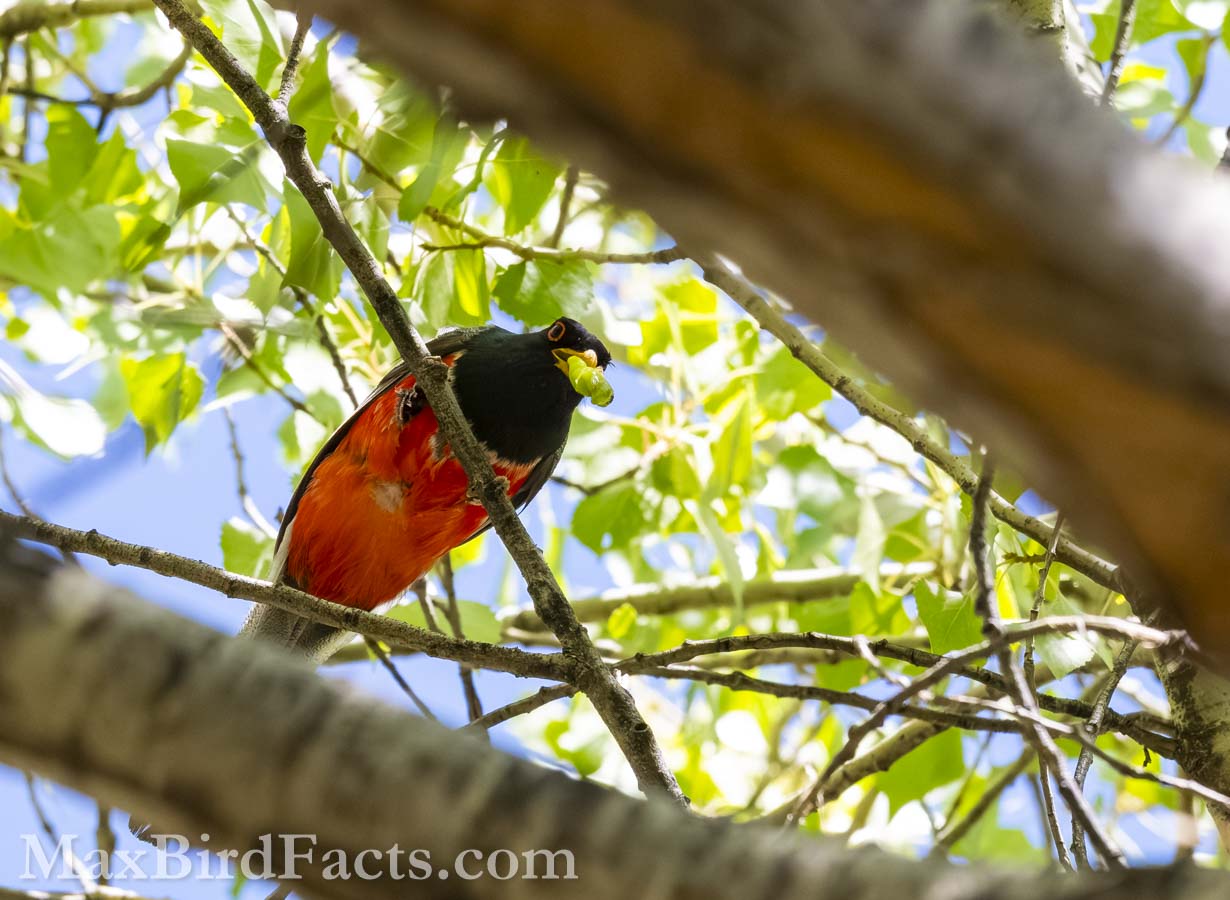
The Red-faced Warbler only stays at elevations between 6,500 and 9,000 feet, and this range means it was a fairly low-chance bird for our trip, with only one real chance for it. After a great morning in Portal and driving around Lake Cochise in Willcox, we got back into Tucson earlier than expected, so we decided to hit Mount Lemmon on a scouting run for the next day.
Driving up the mountain was a big difference from the day before, where we traded a dirt road covered in rocks and ruts for a perfectly smooth asphalt road. After climbing to the top of Mount Lemmon, we were at around 9,000 feet above sea level, where Tucson sits at roughly 2,500 feet. This elevation change brought the temperature down around thirty degrees, from 102°F in town to the mid-70s on the mountain, and this was extremely pleasant.
Getting out of the car and grabbing our gear, I noticed some small birds moving in the nearby trees. I got my binoculars on them and saw a Hermit Warbler flitting around in the pine. I quickly got my dad’s attention, and we hurried over to it. We quickly realized this was a mixed flock with Mountain Chickadees, Hermit and Townsend’s Warblers, Red-breasted Nuthatch, and several other species.
Seeing this activity was an excellent sign, so I kept looking for anything that might be lurking on the sides. Evidently, my target was perched just a little ways away from these other songbirds, doing his own thing. This stunning Red-faced Warbler was preoccupied with finding insects to eat to fatten up before heading south to Mexico for the winter.
My final primary target was staring back at me through my camera’s viewfinder, and I couldn’t have been more thrilled. What was supposed to be a quick scouting trip up the mountain turned out to be a five-lifer list, with my last target among them, and significantly better photos than I hoped for!
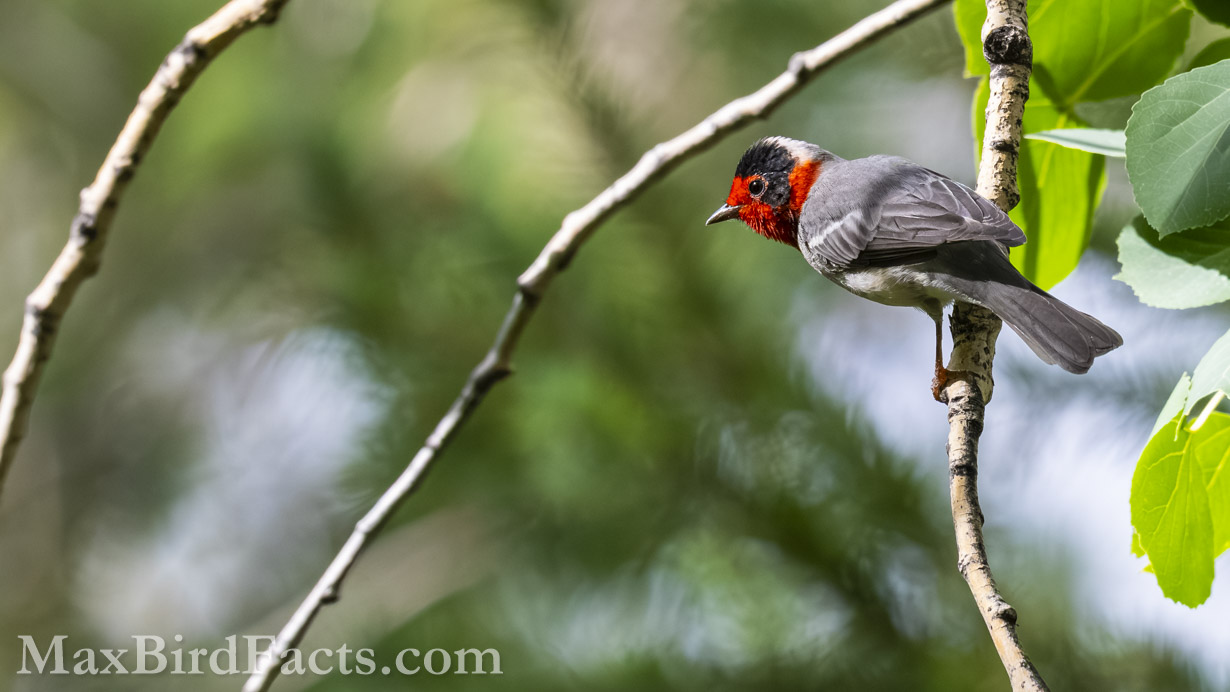
Birding Locations
We had dozens of stops planned for this trip. One thing that was nice and a bit surprising was how close most locations were to each other. For the most part, we didn’t have to drive more than thirty minutes or so between stops. We did have a two-hour drive heading out to Portal, but once we were there, it was a bird-dense area.
While many places we stopped were labeled canyons, each was wildly different from the last. Box Canyon, east of Green Valley, is what I picture when I imagine a canyon. It has steep slopes, mostly rocky terrain, sparse vegetation, and dramatic views. The growing yuca and agave stalks act as excellent perches for birds moving up the canyon walls in the morning.

Compare this to Miller or Cave Creek Canyons, where the slopes are much less dramatic and there is far more vegetation. The birds that called these canyons home were also very different, even between relatively close canyons.
The canyons around Sierra Vista were incredible. Miller Canyon offered some of the best hummingbird opportunities, with the Violet-crowned stealing the show for me. Ramsey Canyon was the only place we heard a Cassin’s Vireo, and hosted a nesting Berylline Hummingbird. Ash Canyon was another spectacular hummingbird magnet, boasting the rare Lucifer Hummingbird.
On the topic of hummingbirds, we saw every species we could have hoped for. Broad-billed and Black-chinned were by far the most common, and you can almost guarantee them anywhere there is a feeder.
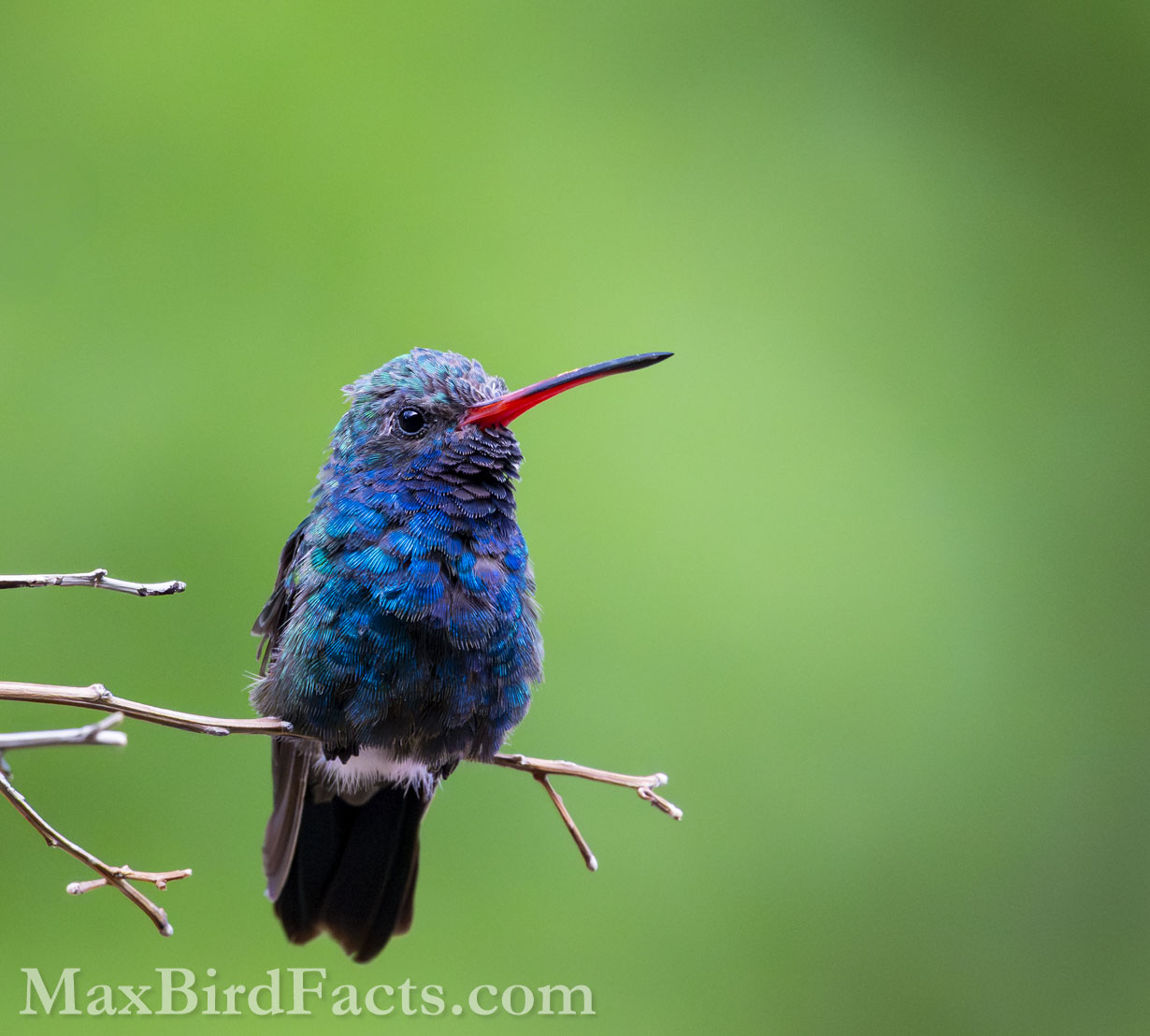
Next were Anna’s, Broad-tailed, and Rufous, which weren’t as common, but they usually had decent numbers if they were present.
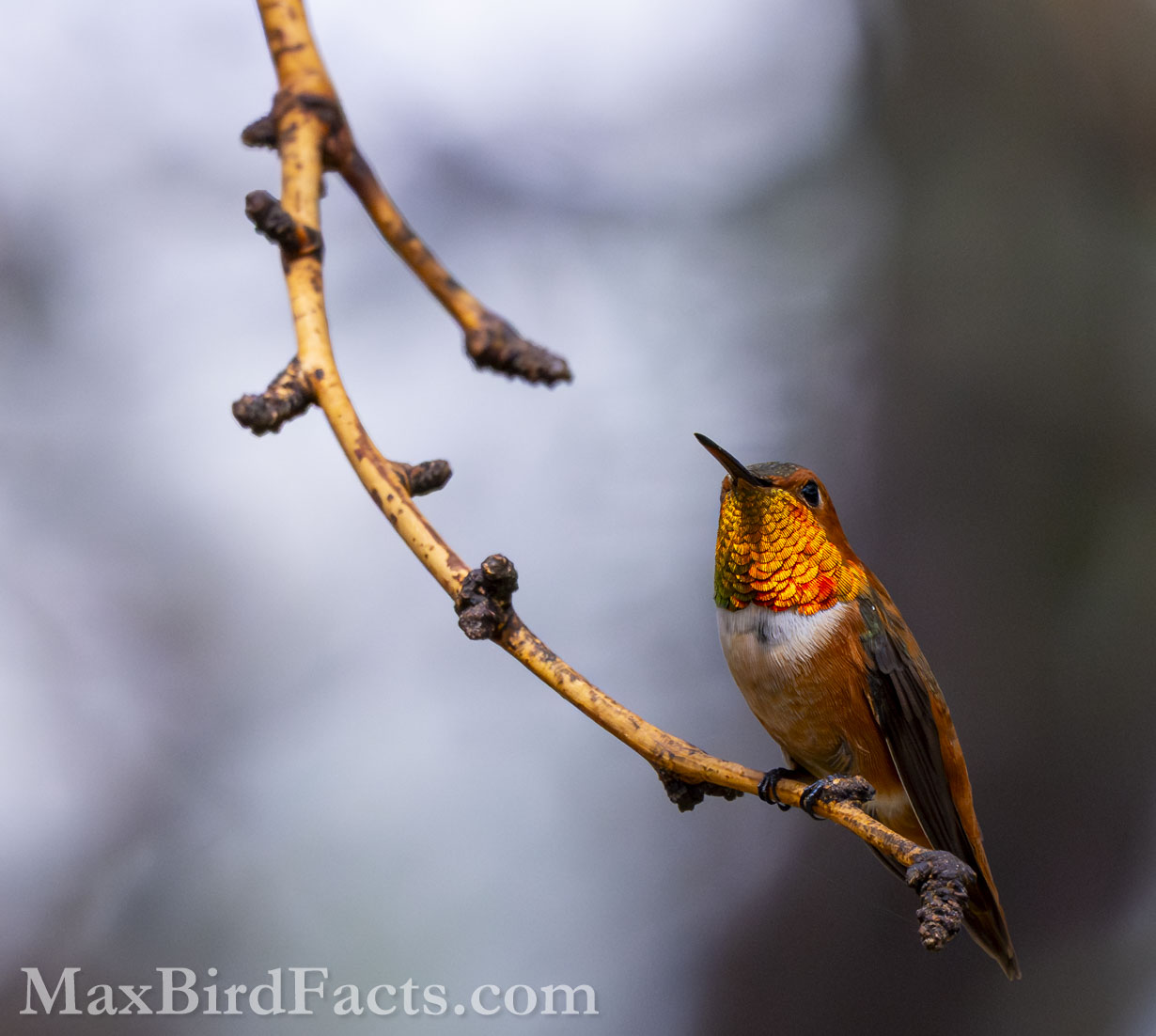
Rivoli’s and Violet-crowned were very attention-grabbing due to their size, and while not as widespread as some others, they weren’t too difficult to find.
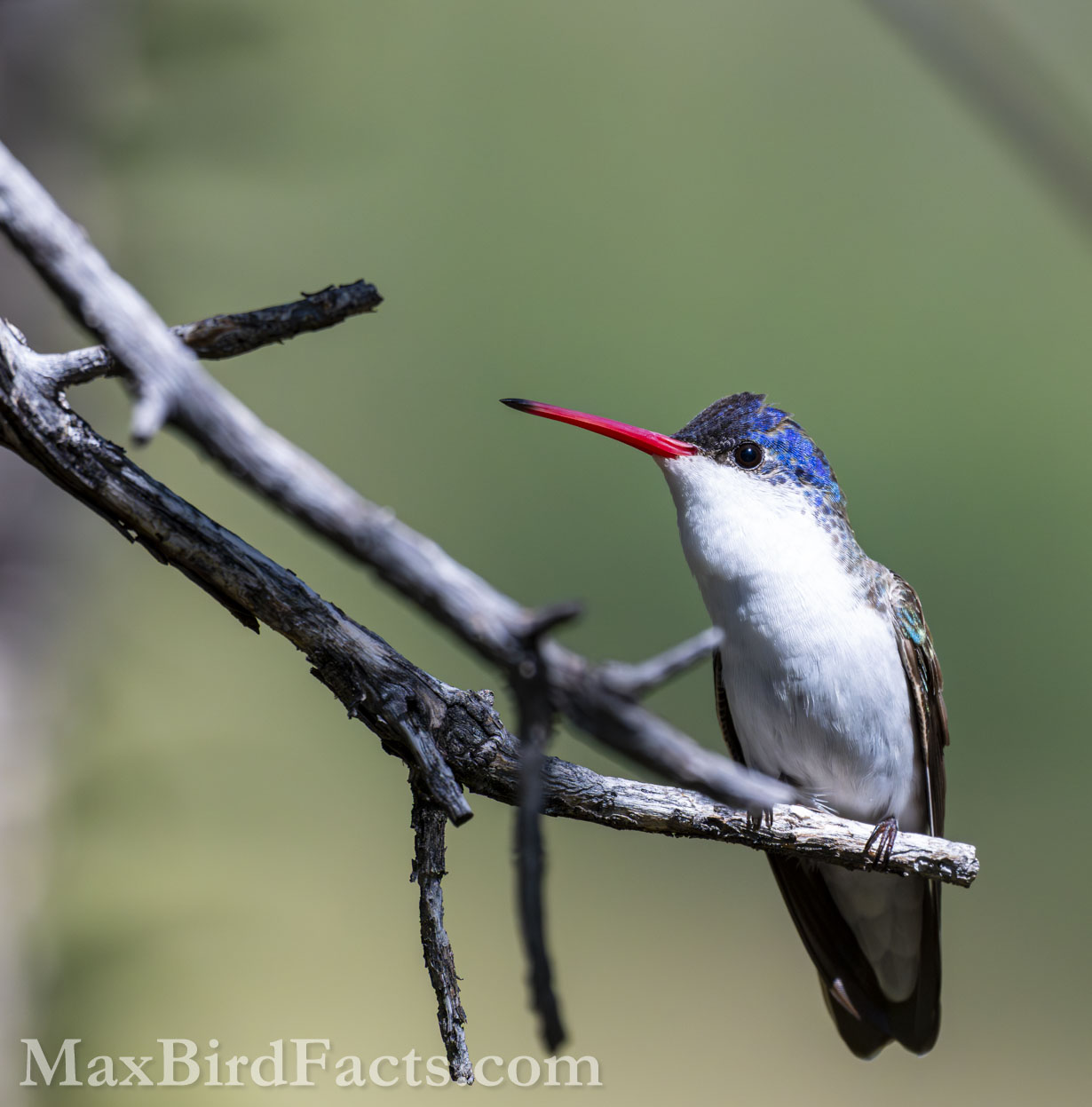
Calliope and Costa’s were pretty tricky, and we unfortunately didn’t see a male of these species. However, the last four were only at one location each:
Berylline Hummingbird at Ramsey Canyon. This bird was on a nest, and while it wasn’t easy to locate, finding it was gratifying after hiking up the mountain.
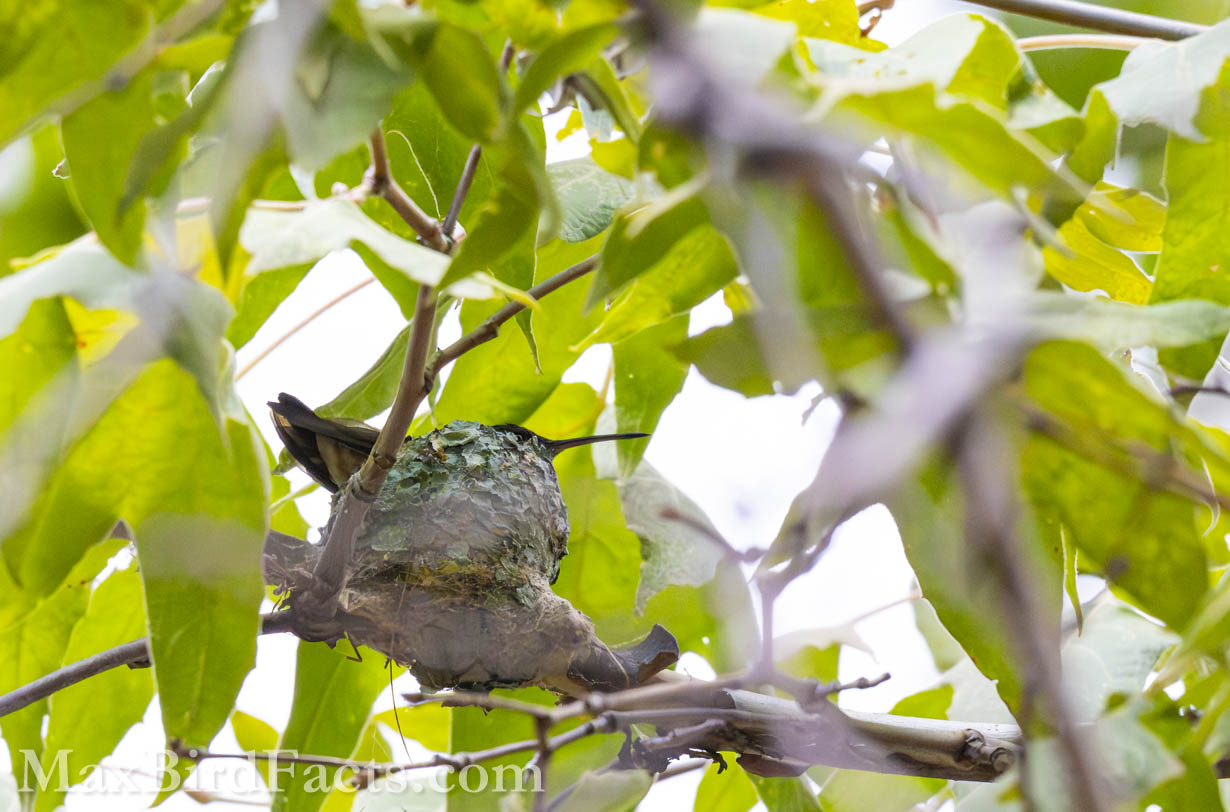
Blue-throated Mountain-gem at the Southwestern Research Station in Cave Creek Canyon. Surprisingly, a few of the people there knew where the hummingbird feeders were, but didn’t know about the unique bird they have!
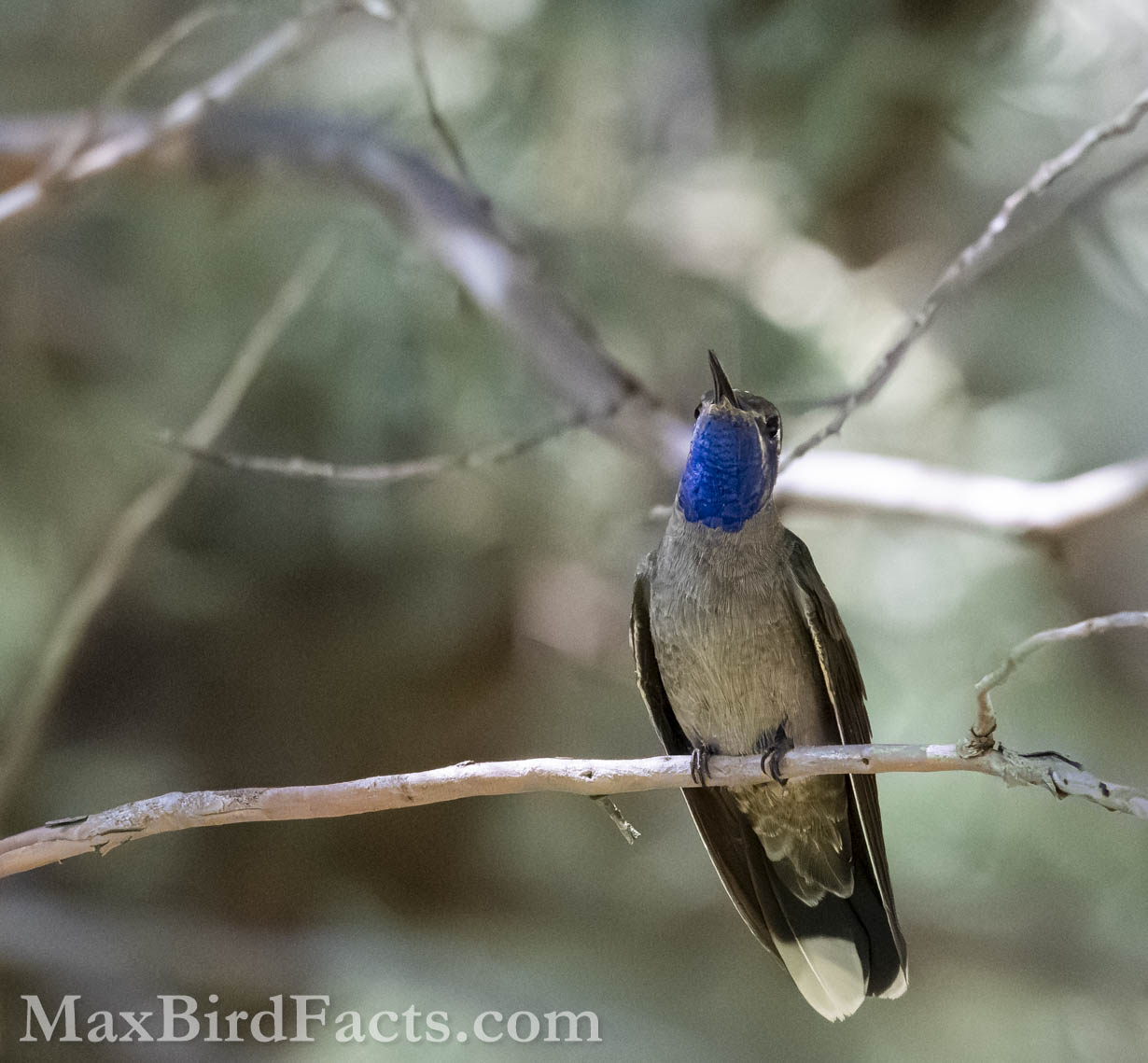
Lucifer Hummingbird at Ash Canyon. There were three of this species here, and we saw two of them come to the feeder separately.
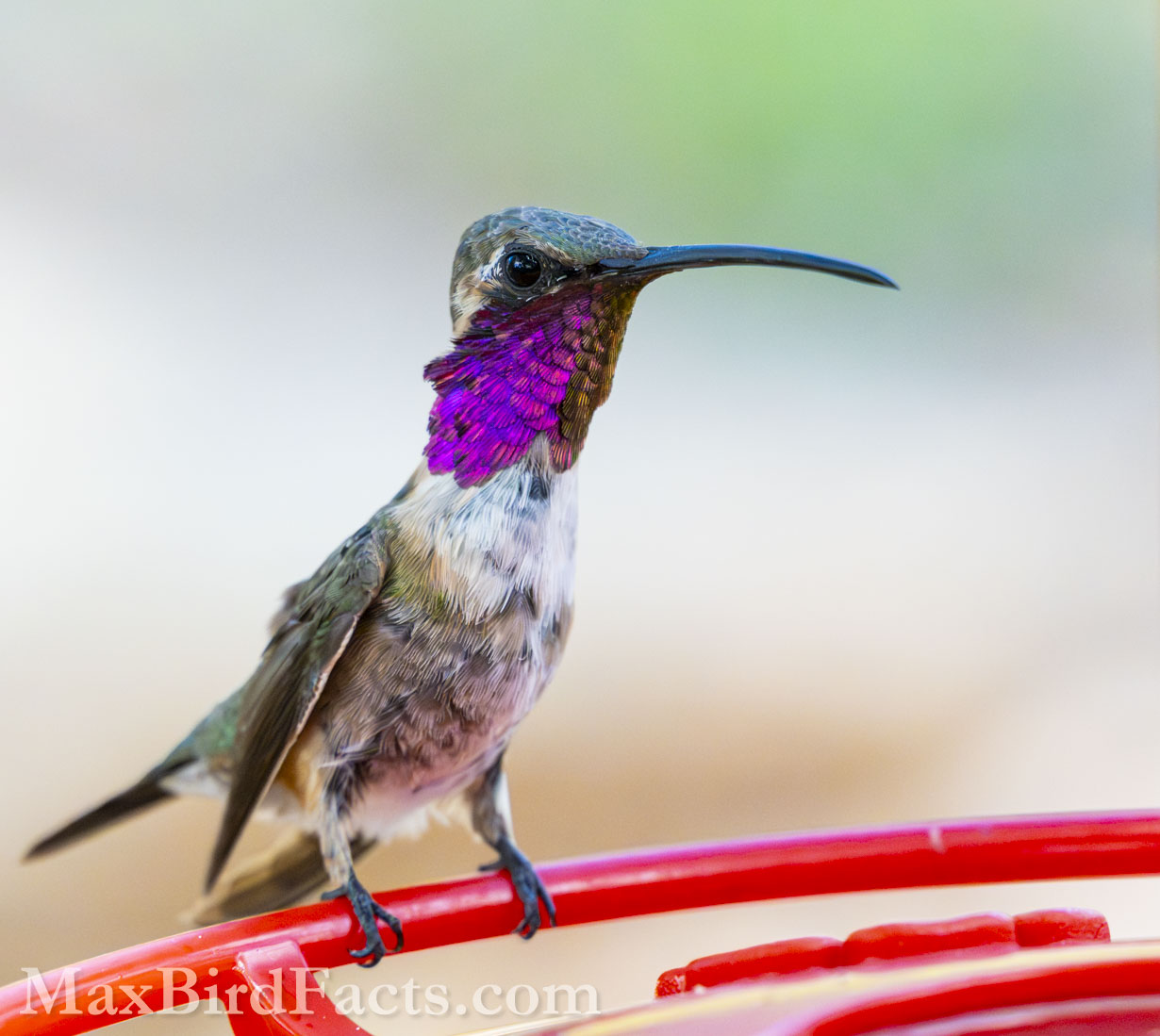
White-eared Hummingbird at the George Walker House. We found out this is a four-year-old male they banded here during his first year, and he’s returned ever since. We also learned that this White-eared Hummingbird was the only one of his species in the US at that time.
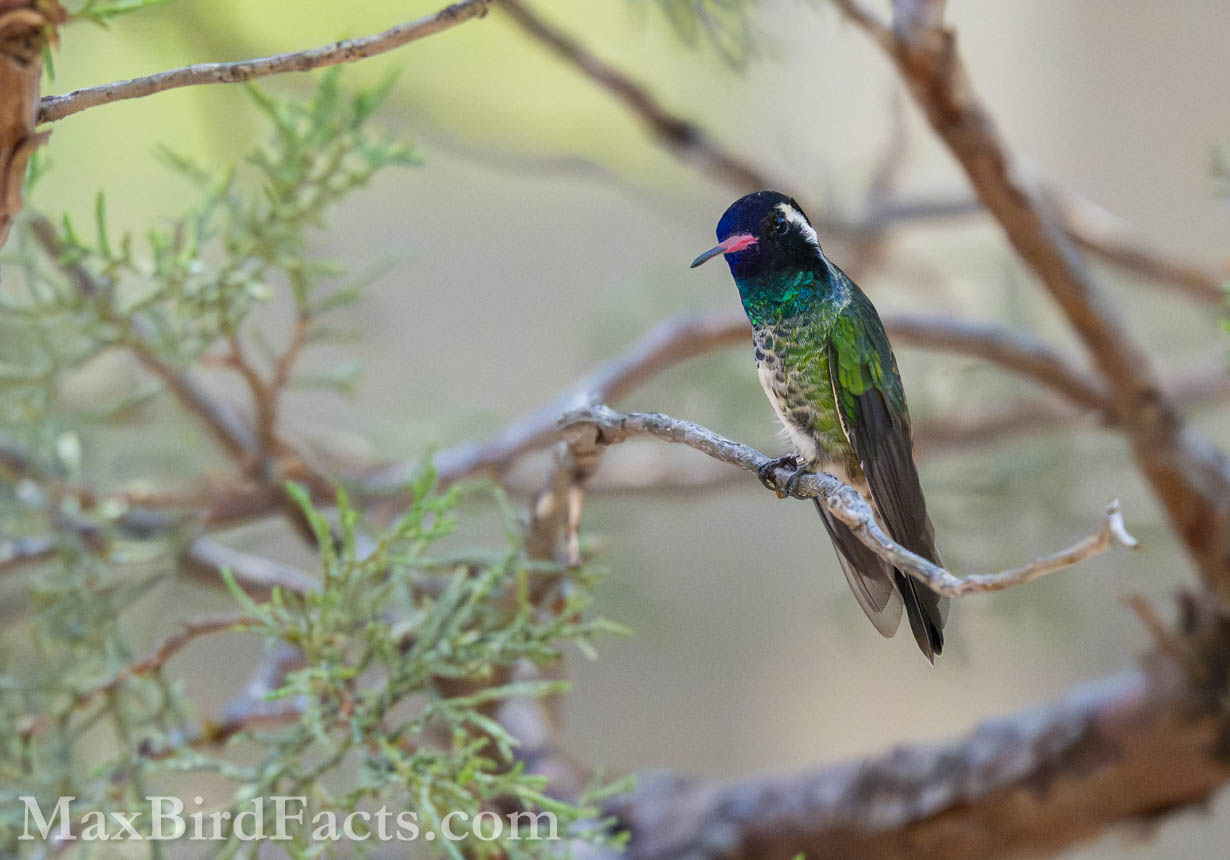
Searching for the Mexican Chickadees at the top of the mountains near Onion Saddle was incredible. The stands of massive pines that towered over everything, and the bed of soft needles on the ground, making everything seem quieter, was a huge tonal shift from any of the other previous locations we visited.
The elevation change also determined the type of jays we saw. At the base of the mountains in Portal were Woodhouse’s Scrub-Jays, about halfway up the mountain, these traded places with Mexican Jays, and near the top were Steller’s Jays. This elevation-based partitioning is what makes this region so species-dense and spectacular.

Peripheral Birds
Aside from the three primaries, I had an entire mental catalog of birds I hoped for from this trip. From relatively common, but regionally unique birds like the Pyrrhuloxia and Chihuahuan Meadowlark, to some rare birds I didn’t want to get my hopes up too high with, like the Harris’s Hawk and White-eared Hummingbird. However, as the trip progressed, our luck continued to hold firm.
Just after getting the rental car and heading to our first stop, we found the rare Least Grebe hiding from the pond’s main viewing area at an obscure viewing point.
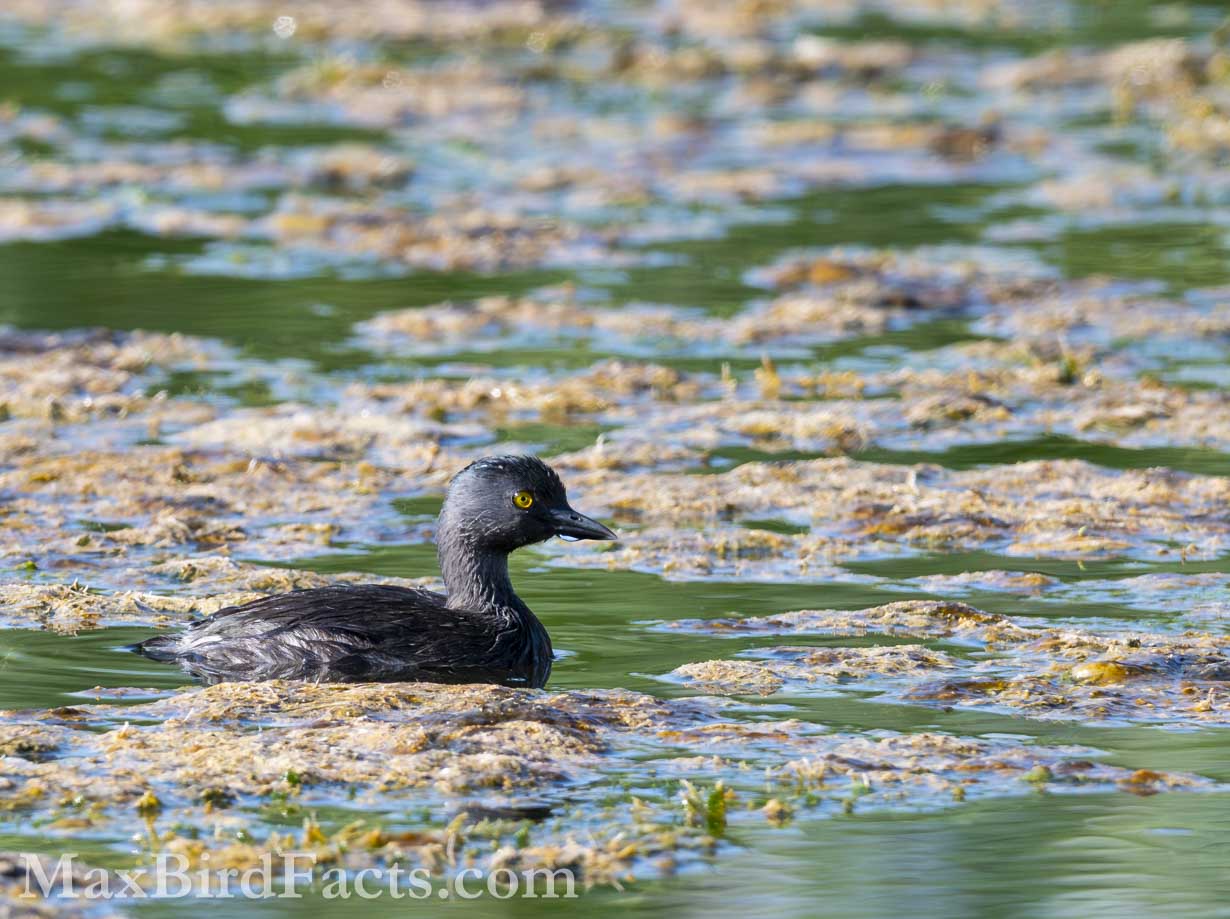
After grabbing our food for the week at Walmart and going to the first hotel to drop off bags before heading out into the desert, we spotted the Harris’s Hawk in someone’s backyard.
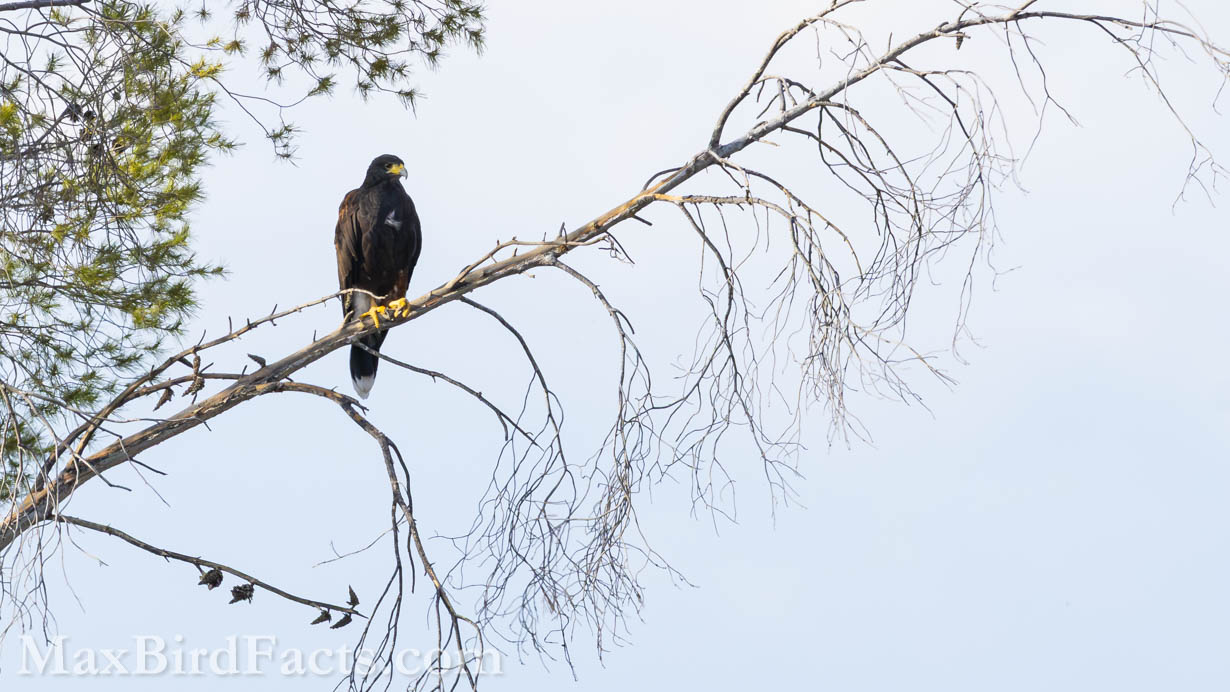
The following morning, we headed into Box Canyon. We were extremely lucky to find a singing Five-striped Sparrow, a stunning male Varied Bunting, a nest of Thick-billed Kingbirds, and several other birds to our growing list.

A few hours later, while sitting at the Santa Rita Lodge feeders, a Painted Redstart jumped onto a fencepost and poised for us.
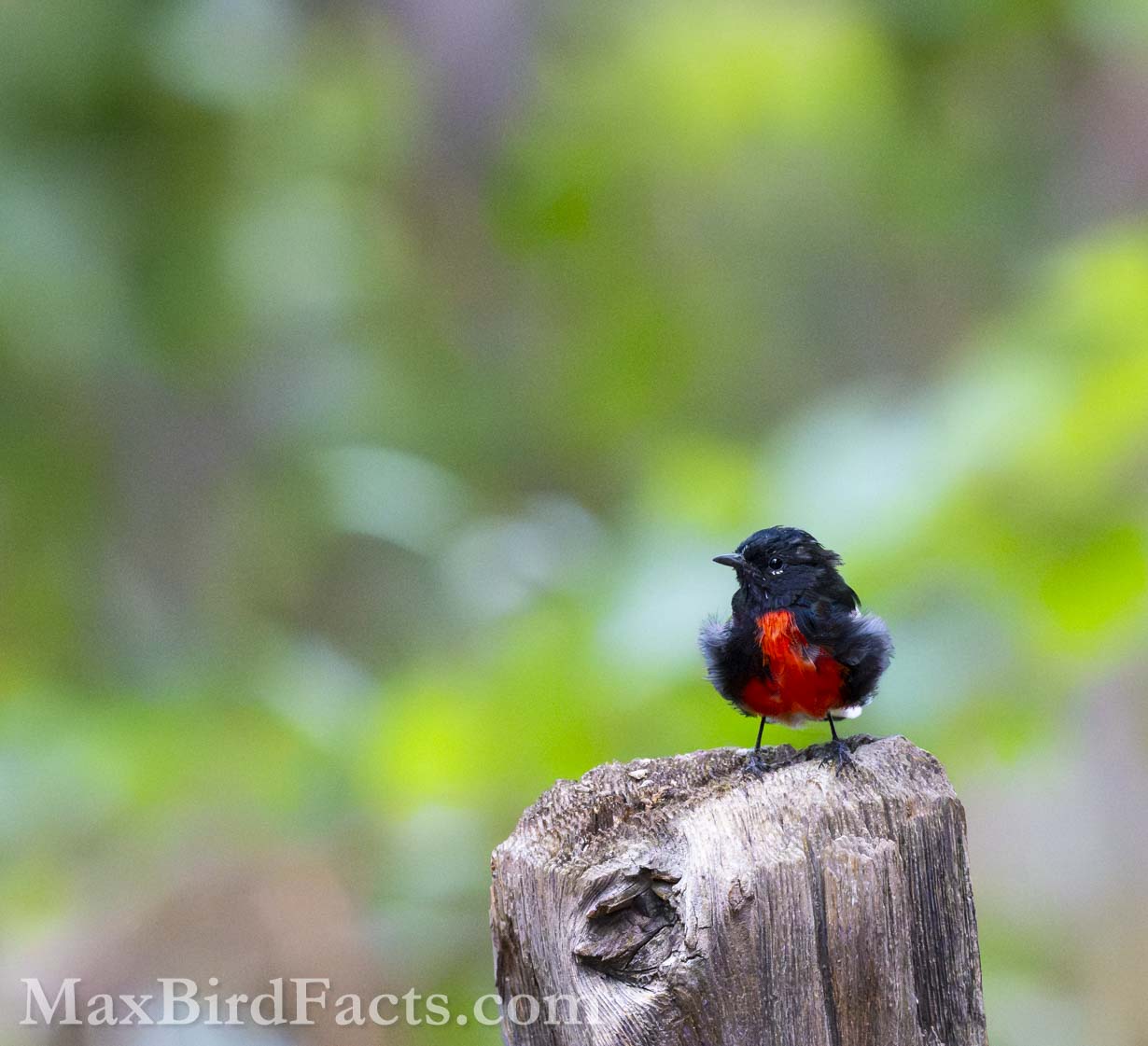
Bridled Titmouse, Arizona Woodpecker, Phainopepla, Verdin, Bell’s Vireo, Northern Beardless-Tyrannulet, Scaled Quail, Rose-throated Becard, Scott’s Oriole, Curve-billed Thrasher, Chihuahuan Raven, Yellow-eyed Junco, Inca Dove, Lucy’s Warbler, Zone-tailed Hawk, Greater Pewee, and Mexican Duck are only a sampling of the other lifers I picked up along this trip.
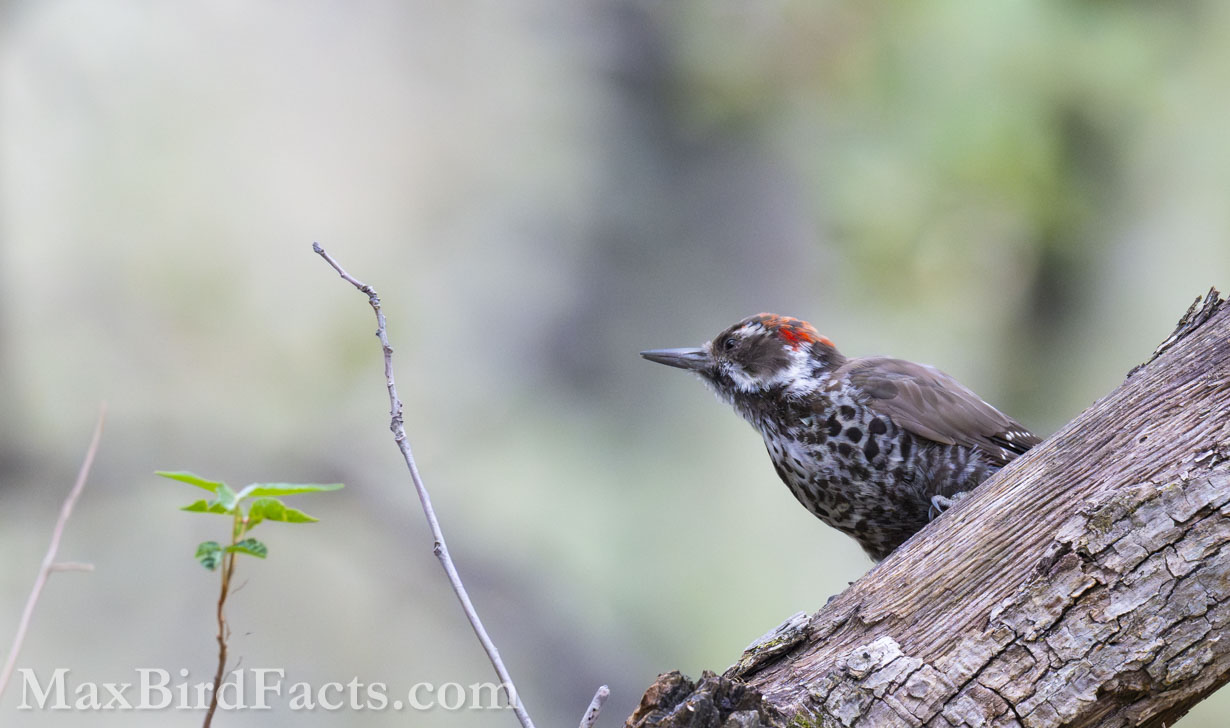
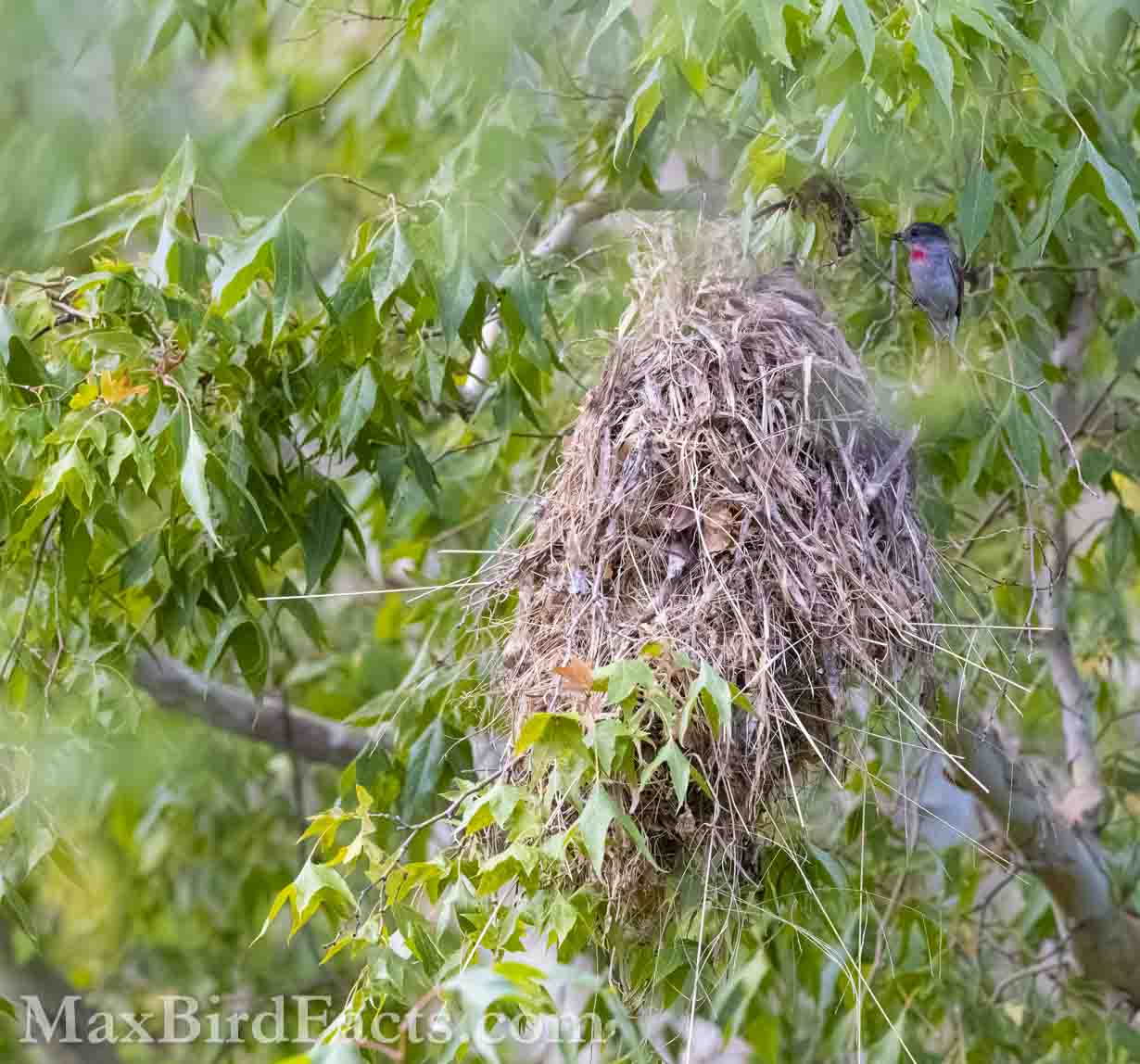
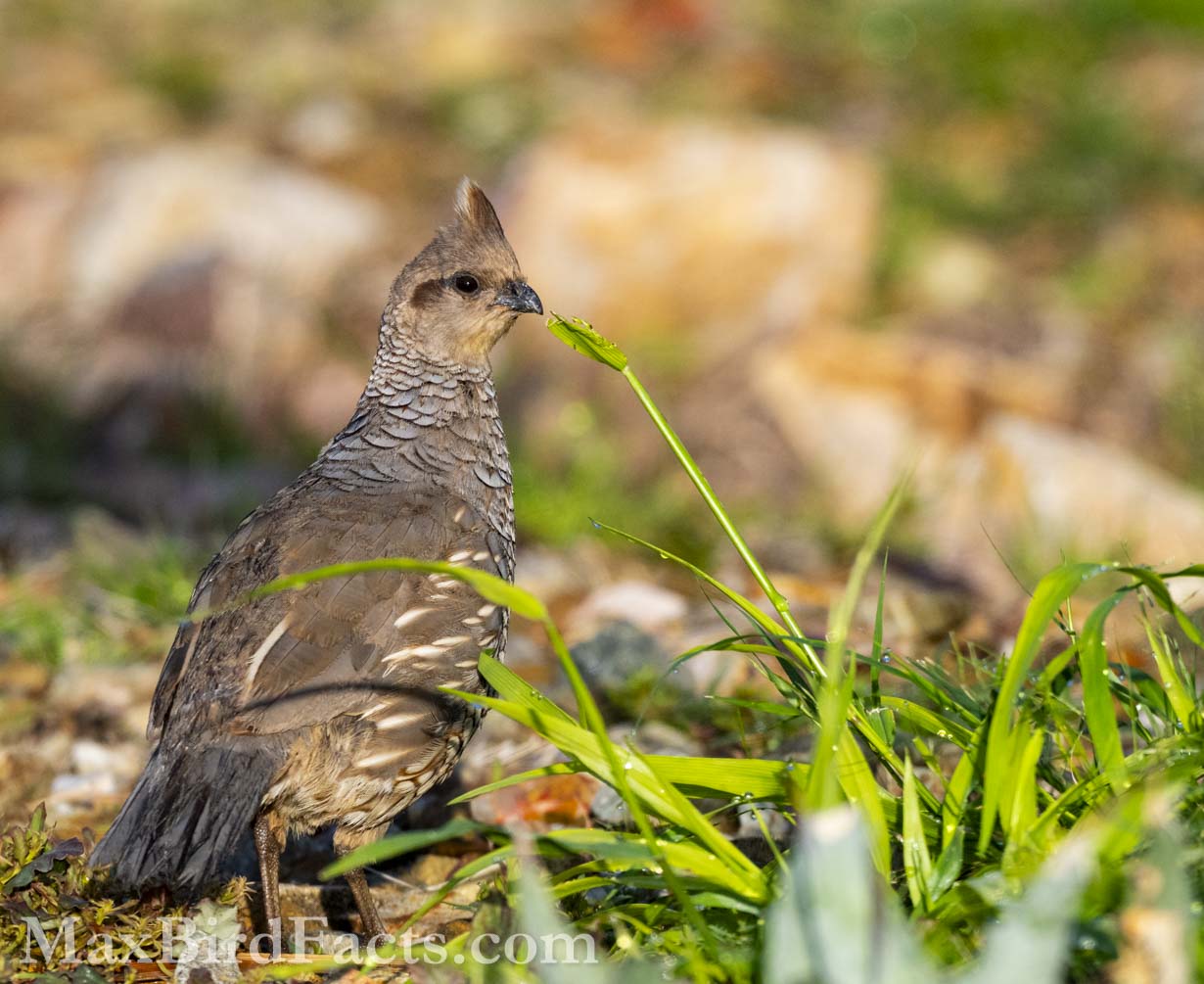
One bird that wasn’t even on my radar that we were extremely lucky with was the Spotted Owl. While waiting for the White-eared Hummingbird to make his rounds again at the George Walker House feeders, we spoke to Jackie, who mentioned birders had heard a Spotted Owl near where we were heading next. She marked down on a map where this location was, and we added it to our route.
Finishing our search for the Mexican Chickadees, we headed toward the campsite where the owl was heard. Getting out and listening, I heard the fledgling screech in the distance, so I started walking down the road. After roughly 100 yards, I could tell I was standing directly across the ravine from where the owlet was calling, so I started scanning with my binoculars.
A few minutes later, I spotted its leg behind a mess of branches and pine needles, but miraculously, it came into the open for us. This was a massive surprise and completely unexpected, and was one of the trip’s main highlights for both of us.
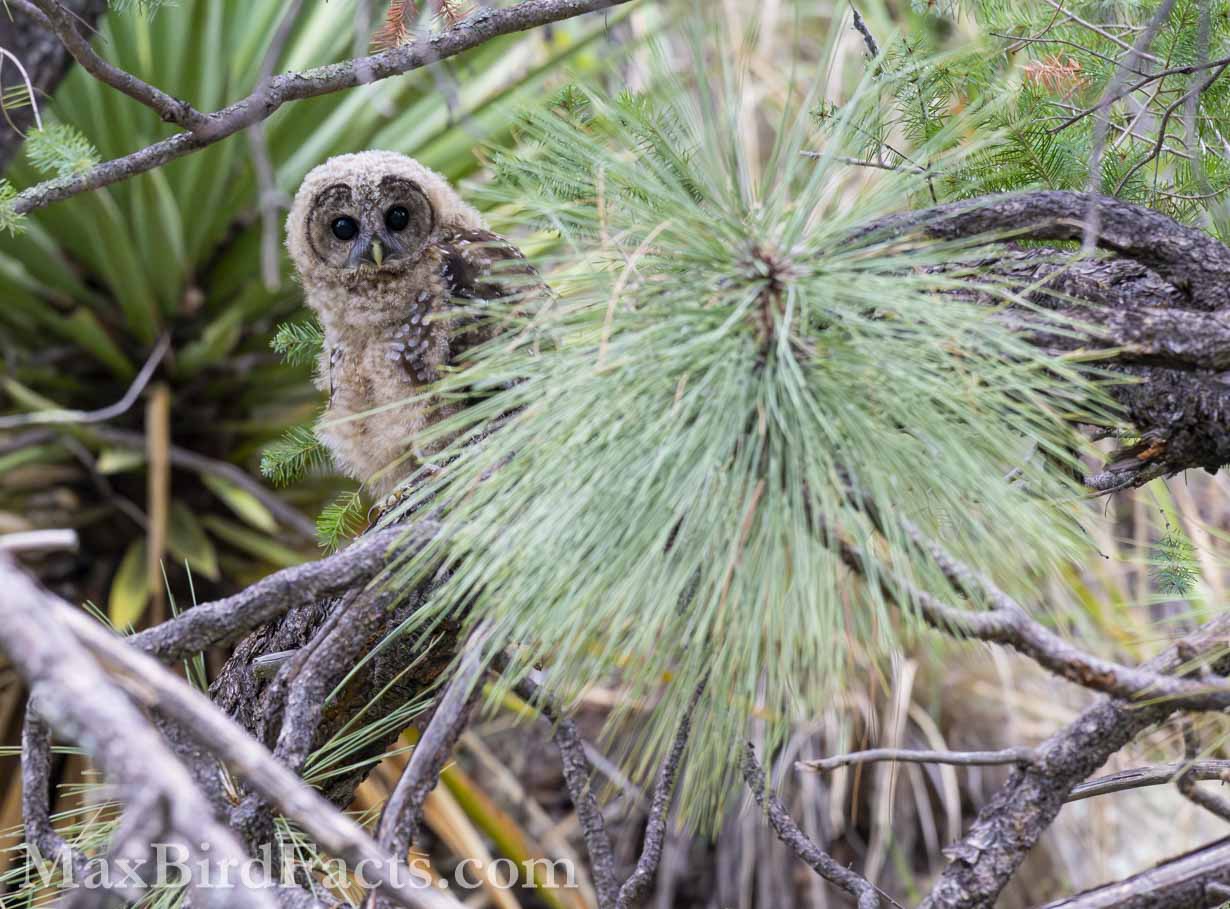
Still, it’s impossible that we would find all the birds we set out for, right? Well, we weren’t missing many by the end.
The only two main strike-outs were the Buff-collared Nightjar at Box Canyon and Flame-colored Tanager at Miller Canyon.
The Buff-collared was a target we added to our list from reports of it during the Southeast Arizona Birding Festival the week before we arrived. Unfortunately, a heavy thunderstorm rolled through the area the night before, and no one had seen or heard it since. Hopefully, it traveled safely back to Mexico and avoided the storm.
The Flame-colored Tanager was one I was really hoping for to finish off my US Piranga tanagers, but no luck this time. One thing we had working against us was that the nesting season was over for many species, likely including the Flame-colored.
This means that usually reclusive birds are forced to be more active to gather food for their growing nestlings, making them easier to spot. However, once these baby birds fledge, the parents often revert to their more skulky behavior, making them difficult to locate again.
Another bird that I almost expected to see somewhat commonly was the Gray Hawk, but we didn’t see a single one. This would have been a new US bird for me, with my only sighting from Costa Rica, so it’s not the end of the world to miss. I think the nesting season theory is the same with this bird, where the Gray Hawk nests were empty while we were in Arizona, making them much more challenging to encounter.
Regardless, I’ll take the miss on those birds for the amount of success we had with so many others! It still is staggering the opportunities we had throughout this trip with so many fantastic birds.
Final Tally
In the airport, killing time while waiting for our flight home, we weeded photos. I had taken over 8,000 images on this trip and wouldn’t have it any other way.
While scrutinizing photos, I picked up several species that tried to sneak by, but I thankfully caught them with my camera.
Some of these were a male MacGillivray’s Warbler flying past, an immature male Lark Bunting that swapped with a Loggerhead Shrike while I tried to help my dad spot it in the distance, and a Zone-tailed Hawk that flew over us while we were looking at the warblers on Mount Lemmon.
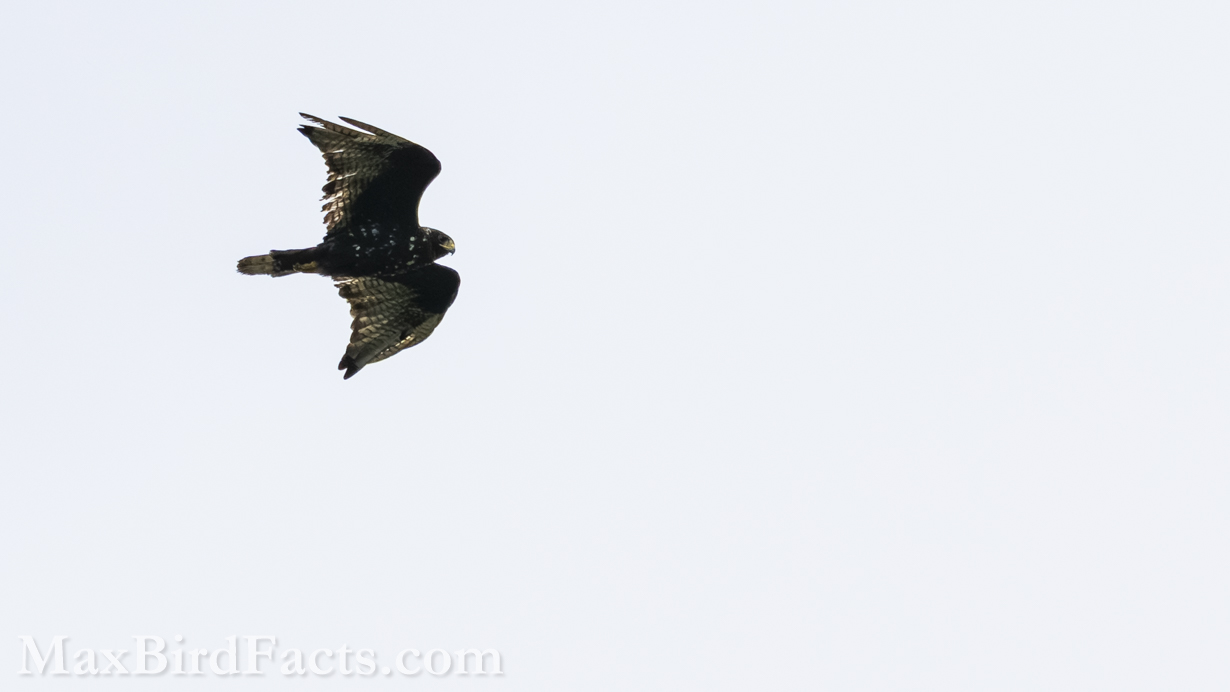
Overall, we had 188 birds from this trip, with 73 being new on my US list, and 65 of those being world lifers, growing my list to 732 species. I also took advantage of taking and posting audio recordings to boost my audio lifers to 146 by adding 53 species this way.
It still hasn’t completely sunk in that this trip has come and passed, but it was an incredible time. Spending the days hanging out with my dad, sharing my passion for birds and nature with him, and making memories I’ll cherish forever makes the birds I gained secondary.
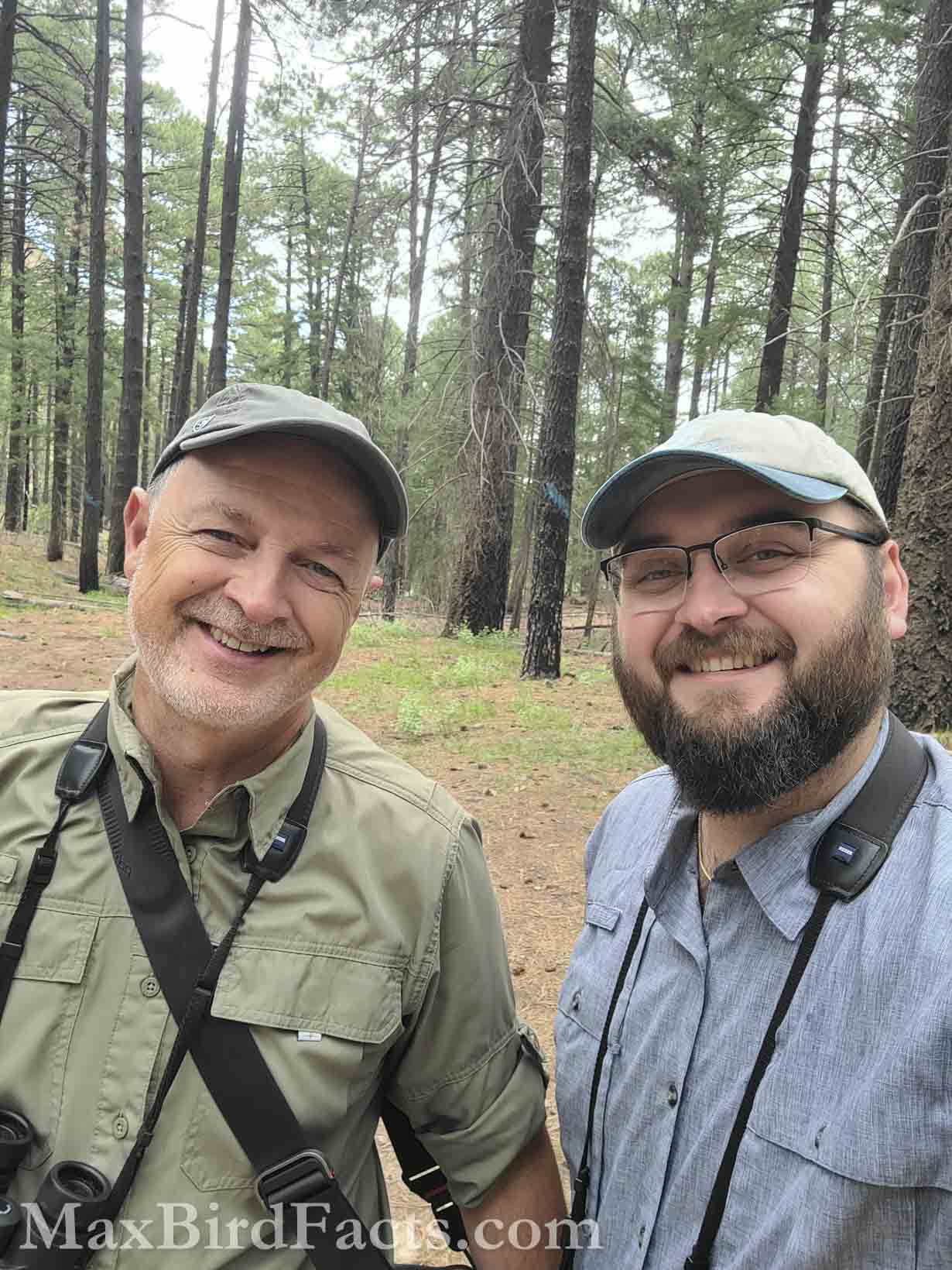
I hope you enjoyed this article. I know it wasn’t like my usual work, but this was such a unique and unforgettable adventure that I wanted to share it with you.
If you want to see more photos from this trip, check out the eBird Trip Report below.
https://ebird.org/tripreport/402761
Get Outside & Happy Birding!
Max
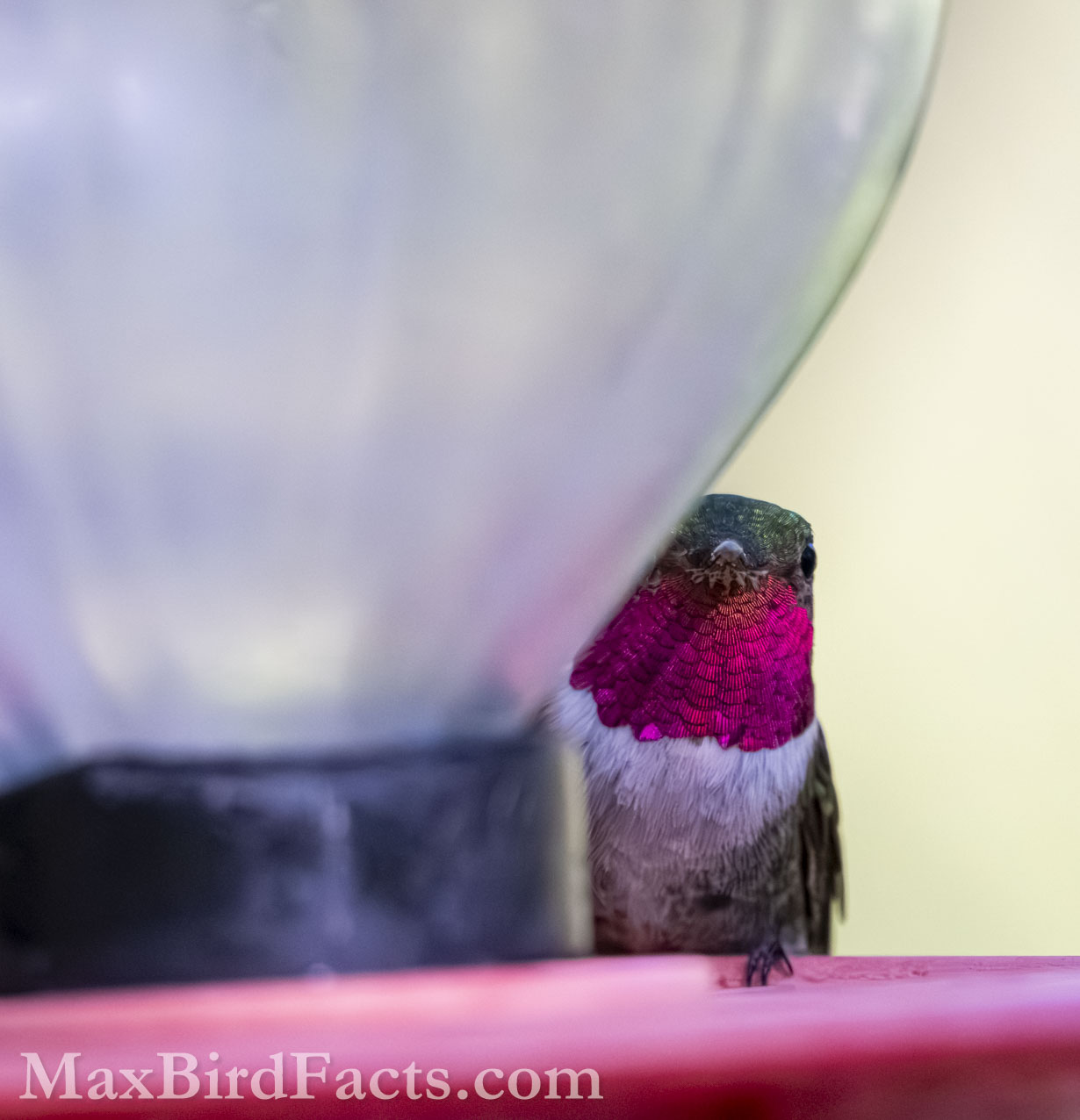
Discover more from Welcome to MaxBirdFacts.com!!!
Subscribe to get the latest posts sent to your email.
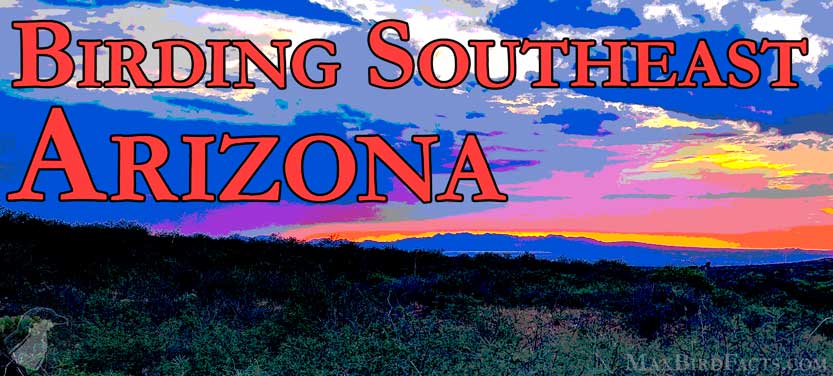
Awesome recap Max! And yes, it was a trip of a lifetime and the memories will last forever! It’s always a blast spending time with you!!!
WOW! What a trip! Thanks for showing all of your beautiful photos!